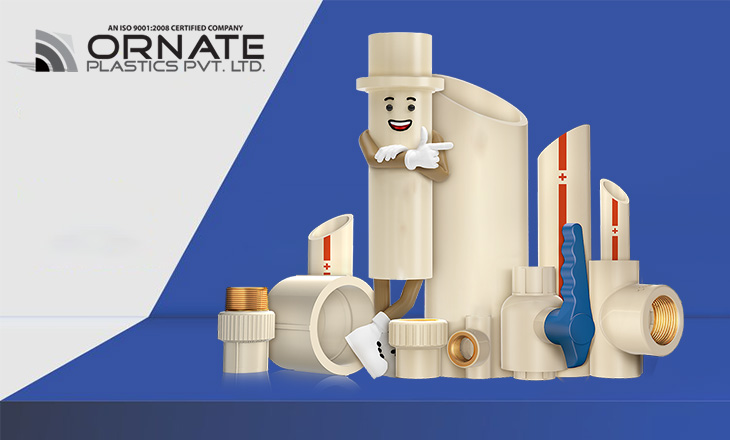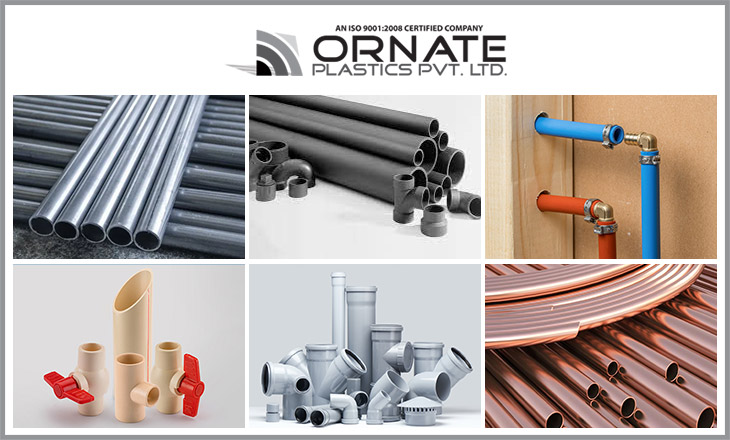


Why you need plumbing pipe supplier? Since the invention of indoor plumbing, the materials used to construct the pipes have undergone several transformations. For many years, metal and ceramic pipes were the most popular. Many modern dwellings may still see galvanized steel, clay, or cast iron pipe. Copper has supplanted galvanized steel in plumbing systems since the 1970s and is now the most popular metal.
On the other hand, plastic pipes play a crucial role in plumbing. ' When compared to copper, various plastic water and sewage pipes are simpler to deal with. A significant factor in their rise to prominence in the 1960s was the development of plastic manufacturing techniques that made these pipes more useful in general.
Pipes may be made from a variety of plastics. Polybutylene, a gray resin used in plumbing systems for decades, is no longer utilized because it breaks and causes leaks. We highly advise you to have any outdated polybutylene pipes replaced with a more modern plastic pipe in your home.
PVC plastic pipes(PVC) treated with chlorine is called chlorinated polyvinyl chloride (CPVC). It is more frequent in industrial plumbing because CPVC is more resistant to high pressures and temperatures. It is ideal for carrying and managing hot water in the house. CPVC, on the other hand, is more adaptable. When it freezes, though, it breaks.
CPVC pipes can transmit water up to 120 degrees Celsius in normal conditions. Consequently, hot water and other high-temperature uses in industrial facilities increasingly rely on these pipes. Fire extinguishing piping in residential and light business settings is also famous. Find out the best plumbing pipe manufacturer.
As far as pipes and fittings go, polyvinyl chloride (PVC) or vinyl is the most popular material in use today. Aside from being used for plumbing, it serves various purposes in the home. PVC is the primary material used in the construction of most water mains. It is less malleable than other plastics. It would help if you didn't use this for hot water pipes or kitchens because of its inability to handle temperatures beyond 60 degrees Celsius.
Due to its wide range of uses, both above and below ground, PVC provides customers with an excellent compromise between tensile strength and cost. Electricity lines, business drainage, process pipes, and underground municipal plumbing such as water and sewage lines and irrigation lines are among the most common uses.
PVC may also be used to make flooring, siding, patio furniture, medical tubing, and trim products like credit cards, among other things.
PEX, or cross-linked polyethylene, is widely used in residential plumbing systems for various reasons. Cold and hot water systems may also benefit from PEX piping. These pipes are ideal for use in bathrooms and kitchens since they can carry water efficiently.
PEX is very versatile, so it may be used in a wide range of situations and is both economical and simple to install. You can distinguish between hot and cold water pipes in the future since they are available in various colors. However, due to their flexibility, these pipes need support (often in plastic or metal straps).
It's safe to say that polyethylene (PE) is the most often encountered plastic in daily life. Ethylene is the only component of PE that doesn't include chlorine, making it more flexible than vinyl. PE may be used in various household applications, from water and gas pipes to lawn sprinklers. Generally, polyethylene (PE) materials are resistant to most common household chemicals.
Polyethylene types of plastic pipeperform best when used at low temperatures in specific applications, such as radiant floor heating or snow melting. High-density polyethylene (HDPE) plastic is one of the most often used derivatives of PE.
This denser kind of polyethylene is utilized to build water and drainage pipes due to its high stiffness and crystal structure.
Piping uses Polypropylene random (PPR), a prevalent ingredient in ordinary plastics. Improved chemical and heat resistance make it a viable alternative to polyethylene (PE).
Water supply, hot water, and air conditioning piping systems fall within their purview. PPR pipe fittings, which are more reliable, easier to install, and more cost-effective than other options, are often used in hot water engineering. The transfer of ultra-pure water, such as deionized water, is PPR's second most prevalent use today.
Plastic pipes may be used to guarantee that your plumbing system is composed of high-quality material while you are constructing your home. It's common for these pipes to be used for fluid transfer applications that don't affect their look or operation. Considering this perspective, it's crucial to recognize that sure pipes serve particular structural functions better than others.
Plumbers use various kinds of plumbing pipes such as UPVC plastic pipes for different reasons. You'll need to know which to utilize for specific plumbing systems if you want to have a rewarding career as a plumber. We offer an associate degree program in plumbing and heating technology that teaches you all you need to know about plumbing in residential and commercial settings. Students will learn the fundamentals of heating and plumbing theory and practice in a laboratory environment.
Copyright © 2021 ORNATE Plastics pvt.ltd. All rights reserved.






